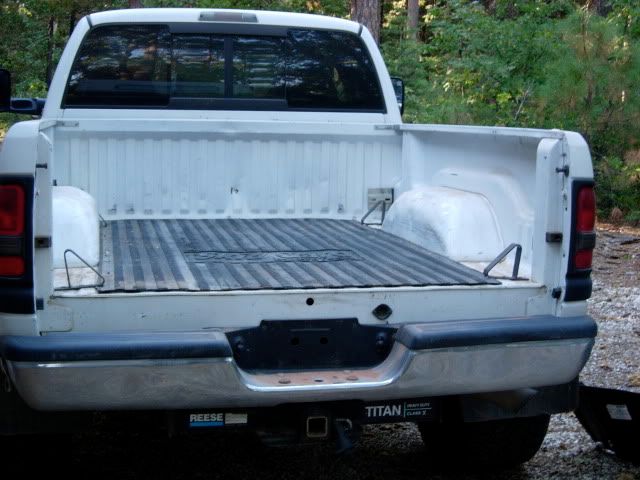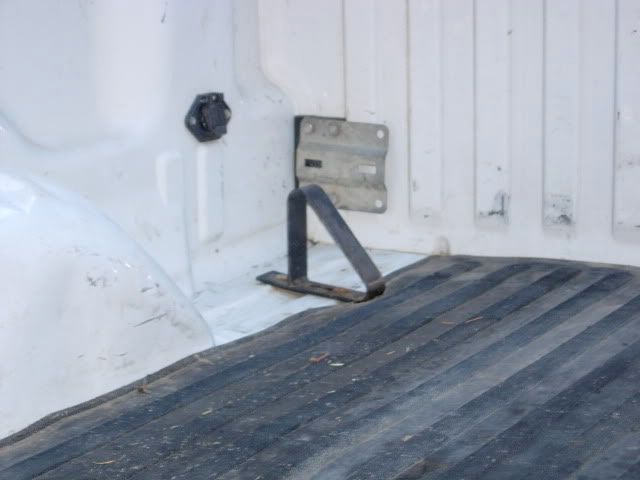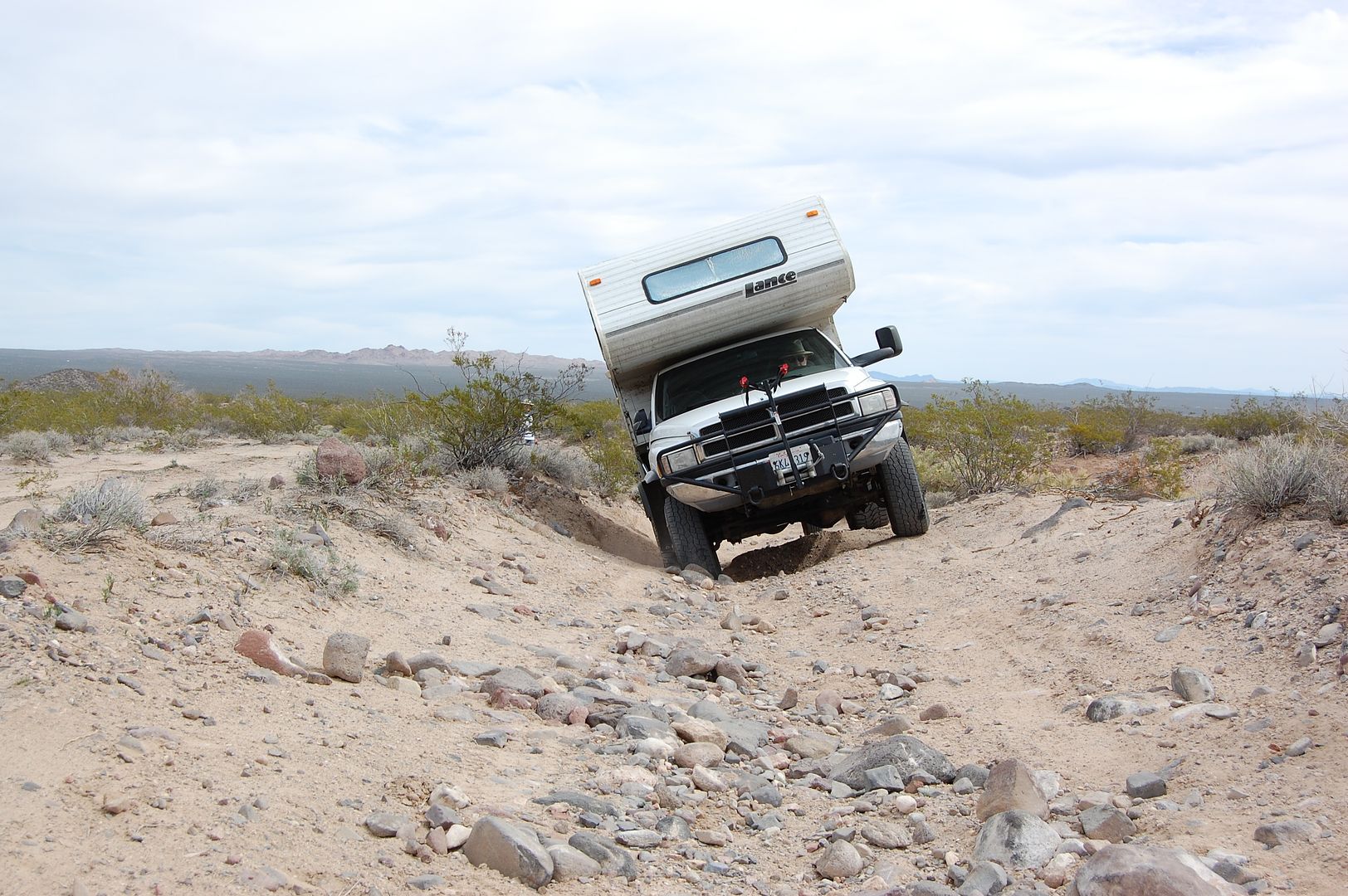Read over Hackney's ideas on pivoting frames:
three point, single point to the front.
three point, single point to the rear.
four point diamond shape, solid in the middle, pivot on the ends.
All the European Camping Trucks use the pivot system of one kind or another.
If you don't have a way to keep the camper absolutely flat when traversing axle twisting roads, you will eventually pull the camper apart.
I use a quick and dirty way to keep from pulling everything to bits (over time). When i encounter axle-twisting roads or trails, I loosen the front tie downs a little bit and loosen the rear tie downs a lot, to the point of lots of slack. Why? Because when the frame twists on my Dodge (a short bed twists less than a long bed) it twists the bed also. To alleviate the pull on the tie downs, i let one side or the other on the rear lift off the bed a little to keep the TC frame from twisting. My Lance has 2/3's of the weight toward the front of the floor of the TC. This is the end i do not want to lift. It should follow the front part of the frame/bed attachments. The rear, being a lot lighter, is free to lift...one side or the other while the frame twist away underneath. The other Major component of this system is using (Lance or other) camper guides. These little triangles keep the box from moving side to side allowing you to have the tie downs looser with less pressure without the box sliding side to side and letting the shear walls and bottom framing of the camper keep things straight.


or off camber:

I personally think a camper on a flat bed is a better idea than going without a bed at all. A truck bed is no match for the twisting of the truck frame. It just follows orders from below. In order to work even on a pop-up must be on a pivot system. Another idea I had was to use an Airstream or other metal shelled trailer body, with its built under framing on very long trucks, like LoRoad has. Still would have to have in a pivot system.
There is one other way. On Military trucks, like 10WD, there is a sub-frame which is attached with long bolts that go thru a flange welded on both parts of the frame. A guy on this very forum showed pix. Above the top flange the bolt protrudes a ways up, and has a stiff spring on the shaft that compresses if the two parts of the frame pull apart as in twisty axles. It is a tried and true system.
regards, as always, jefe






